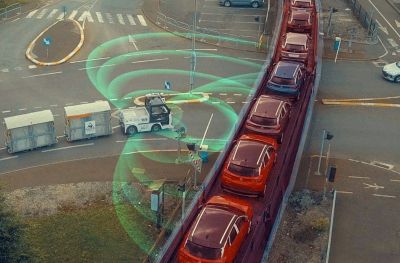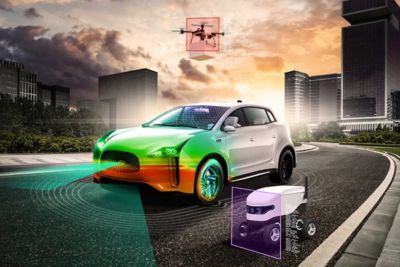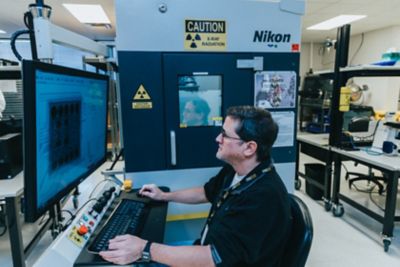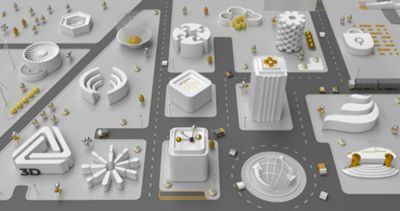-
United States -
United Kingdom -
India -
France -
Deutschland -
Italia -
日本 -
대한민국 -
中国 -
台灣
-
Ansys is committed to setting today's students up for success, by providing free simulation engineering software to students.
-
Ansys is committed to setting today's students up for success, by providing free simulation engineering software to students.
-
Ansys is committed to setting today's students up for success, by providing free simulation engineering software to students.
-
Contact Us -
Careers -
Students and Academic -
For United States and Canada
+1 844.462.6797

For 55 years, Earth Day has been celebrated around the world to unite the globe for a sustainable future. This year, 1 billion supporters in 192 countries are supporting renewable energy by aiming to triple the global generation of clean electricity by 2030. The 2025 Earth Day theme, “Our Power, Our Planet,” represents humanity’s power to change the world for the better.
The United States generated 25% of its electricity using renewable energy sources in the first six months of 2023, with some research predicting that renewable energy could account for 90% of U.S. energy needs within 10 years. In addition to renewables, many companies are optimizing energy efficiency and looking to more sustainable fuel sources, such as hydrogen, and ways to reduce their overall power consumption.
The technology to meet our global energy needs with clean, affordable, sustainable power is here, and Ansys is helping the cause with simulation. This report reveals that while simulation has already made a significant contribution in advancing sustainability, its full potential still lies ahead. (Ansys thanks McKinsey & Co. for the research it provided for this report.)
Simulation’s Role in Sustainable Energy
Engineering simulation has been reshaping industries for decades, driven by our need for more efficient, accurate, and cost-effective methods to develop and optimize products and processes. Simulation enables organizations to evaluate the feasibility and performance of technical concepts over a range of what-if scenarios much faster and cheaper than with lab-based testing. It helps identify the most promising technical solutions and accurately details designs for optimal efficiency, reliability, robustness, and environmental impact. This helps reduce carbon emissions, materials, energy, and water consumption, as well as waste generation.
Assessing a technology solution’s environmental footprint requires evaluating environmental impact across its full life cycle. The most common environmental sustainability metrics include:
- Resource consumption
- Material recycling and reuse
- Waste generation
- Emission of greenhouse gases, air pollutants, and ambient noise
- Compliance with environmental standards and sustainable procurement
Simulation plays a key role in sustainability initiatives that aim to improve these metrics across the entire life cycle, from product ideation and development to in-field operation and ultimately end of life. Next to directly improving the sustainability footprint, simulation can enhance the speed at which sustainability initiatives are executed, realized, and delivered to achieve earlier impact.
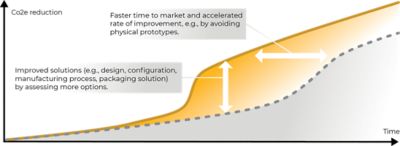
Examples of the contribution of engineering simulation to sustainability
Organizations harnessing the power of simulation for sustainability initiatives can follow a clear methodology consisting of four steps:
- Prioritize key sustainability metrics using the company’s baseline and identify improvement initiatives, including their expected impact against the baseline.
- Assess qualitatively or quantitatively where and how simulation contributes to sustainability.
- Quantify the specific simulation contribution.
- Aggregate the impact of simulation per initiative on company-wide sustainability metrics.
The Real-world Impact of Using Simulation for Sustainability
Danfoss Drives, a global leader in energy-efficient solutions, is committed to advancing sustainability and reducing carbon emissions through innovative technologies. Danfoss Drives’ control platform is widely used across industries ranging from manufacturing to energy production, and its technology is pivotal in areas such as pumping systems and heating, ventilation, and air conditioning (HVAC) applications.
Danfoss Drives’ new drive generation, iC7-Automation, shows improvements across many environmental dimensions compared with its previous VLT® AutomationDrive generation. To develop the iC7-Automation modular control platform, Danfoss Drives used an Ansys simulation tool that combines high-fidelity multiphysics simulation and interactive geometry modeling in a single, easy-to-use tool. This helped the company gain critical insights earlier in the design process and minimize physical testing and prototyping, saving time, energy, and costs while reducing material waste.

Danfoss Drives’ iC7-Automation modular control platform and related applications
In total, Danfoss Drives lowered CO2 emissions of the new iC7-Automation modular control platform by up to 1,927 kg carbon dioxide equivalent (CO2e) per unit during the use phase. Simulation contributes around 50% to this reduction, which is equivalent to an impact of ~959 kg CO2e per unit. A full transition to the new control platform could save millions of tons of CO2e, half of which could be driven by simulation. This potentially represents up to 10% to 13% of total emissions.
Use of simulation will significantly shape how organizations approach sustainability initiatives. As more companies recognize the role of simulation in sustainability and address process gaps, its adoption is expected to rise. This will not only enhance environmental metrics but drive innovation at a faster pace both at organizations and beyond. With simulation, the collective impact on global sustainability goals could be profound.
Read the full report to learn how engineering simulation can drive sustainability initiatives.

The Advantage Blog
The Ansys Advantage blog, featuring contributions from Ansys and other technology experts, keeps you updated on how Ansys simulation is powering innovation that drives human advancement.
